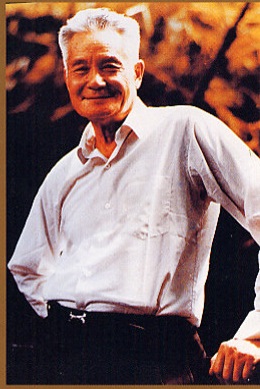When I was growing up in Mississauga, as a person of mixed Chinese heritage in Canada, I did not often see Chinese arts highlighted in my everyday life. I remember the glee I felt when I would see artwork from Chinese artists around my grandparent’s house or scattered around Mississauga’s Chinese Centre, where we would walk after Sunday Dim Sum with my family.
It was that same glee I felt when flipping through The Perkins Bull Collection: Peel Pictures Given by the Artists (1934). The well-loved book seemed to open directly to a certain page, as if I were meant to see it. The first name on the page was “Yee Bon”. I was intrigued to see him attributed to the painting Credit River, a river I myself grew up with.

Bull describes Bon as “a talented oriental artist” living in Toronto on Elizabeth Street. His Credit River painting is a “happy pastoral [landscape], where the technique shows signs of being modified by certain features of Chinese painting,” according to Bull. Indeed, Bull was correct in his estimate that Bon’s work was inspired by not only Western mediums, but also Chinese techniques- this was entirely intentional for Yee Bon.
Yee Bon (1905-1995) was a Chinese artist born in Guangdong province in 1905. He dedicated his life to promoting Western art in Asia, a love which came from his early experiences in Canada. He moved to Canada in search of work to support his family back home in China when he was only 13 years old in 1918.

Leaving his family to navigate this new world in Canada was undoubtedly difficult for the young Bon, but he soon found his calling. In 1928, he attended the Winnipeg School of Art, studying Western Classical and Realist painting techniques. In 1932, Yee Bon transferred to Toronto’s Ontario College of Art to study under notable “Group of Seven” artists J.E.H MacDonald and Frank Johnston, among others.
It was probably around this time when he was attending school in Toronto when he painted Mississauga’s beautiful Credit River. Indeed, Bon’s work is reminiscent of the Group of Seven works, but with an Eastern twist, which Bon was so well known for. In 1932, Yee became the first Chinese artist to exhibit in the National Art Gallery of Canada in Ottawa.

After finishing his studies in 1935, he returned to China and settled in Hong Kong. However, tensions were high upon his arrival. The Sino-Japanese and Pacific Wars were looming, and few wanted to invest or take notice of seemingly trivial matters like art. Yee Bon nevertheless set up his own art studio, refusing to stop painting. He sought to merge the techniques of the West which he had come to love with the national spirit of his homeland.
In 1937, acclaimed Chinese artist Xu Beihong visited his exhibition and studio exclaiming, “I think oil painting is novel to China, especially in the South. I had no idea that there are [such] great oil painters in Hong Kong [like] Yee Bon.” Bon had been looking for a muse to harness his creativity when Xu Beihong invited Bon to paint with him through his journeys to Guilin that year.
Along the Lijiang River, he saw boat workers fighting against the strong river currents. Yee was deeply moved by the sight. He had found his muse at last- he found strength in the quiet heroism and perseverance of the working class. As such, his works of the late ‘30s onwards often display powerful scenes of everyday people doing extraordinary things.

His love of working-class depictions in his art came from his experiences of being a labourer in Canada. Bon believed, “A painter should paint what he is familiar with in order to reflect the passion to the things he loves. He should not construct entirely from imagination or forcefully portray subjects that belong to a world out of his. These can only be ornaments rather than sentimental works of art”. His empathy and understanding were what ultimately inspired him.
Along with fellow artists Lee Byng and Luis Chan, Bon put on exhibitions and educational activities for the Hong Kong public, despite their often-limited resources. Their influence was undeniable. The trio were known as the “Three Musketeers” of Hong Kong’s art scene during the ‘40s and ‘50s.
Yee Bon would go on to continue his artistic career, creating beautifully poignant oil paintings for over 60 years. His paintings have been displayed all over China and North America, including the Guangzhou Institute of Fine Arts, the Hong Kong Museum of Art, and the National Art Museum of China, Beijing. Yee Bon passed away in 1995.
That brings us back to our Credit River painting, whose story began on the banks of our little river here in Mississauga nearly 100 years ago. It was displayed for many years at the University of Toronto’s St. George Campus. In 2015, the painting was cut and removed directly from its original frame and stolen by persons unknown. It has never been seen again. In all honesty, I was heartbroken when I learned of its fate.
During Asian Heritage Month in May, I find myself reflecting on the accomplishments of Asian and Pacific Islanders here in Canada. I find myself contemplating the importance of people like Yee whose life was dedicated to bridging gaps and overcoming barriers between the East and the West. That is why the theft of such a piece is so tragic to me because Yee Bon would have been an artist I would have looked up to as a kid and felt seen and heard in his brush strokes. I hope that one day, the piece will be recovered so that it can inspire others once more.
Police are asking anyone with information relating to the theft of Yee Bon’s Credit River to contact police at 416-808-5200, or Crime Stoppers anonymously at 416-222-8477.



Comments are closed.